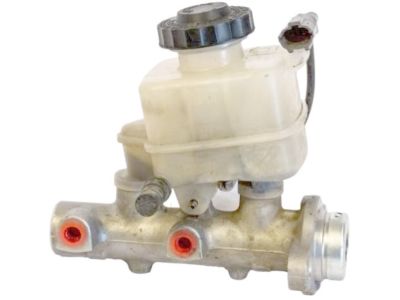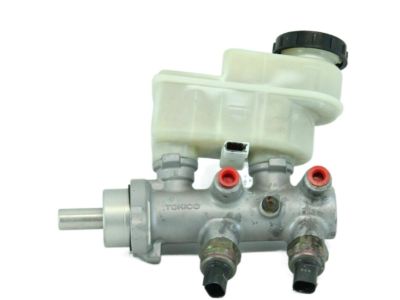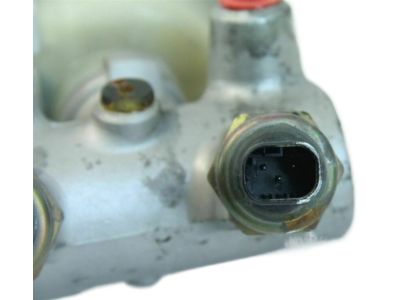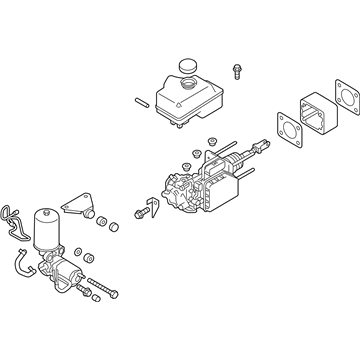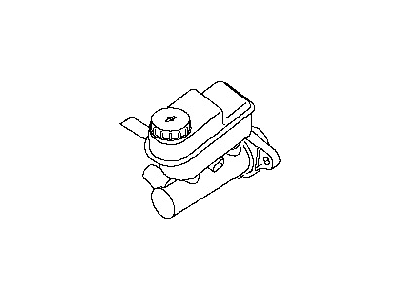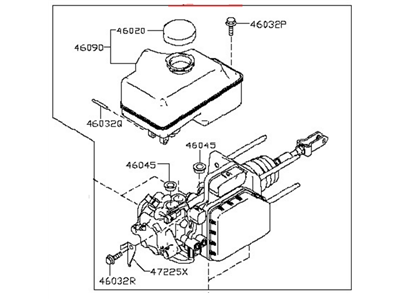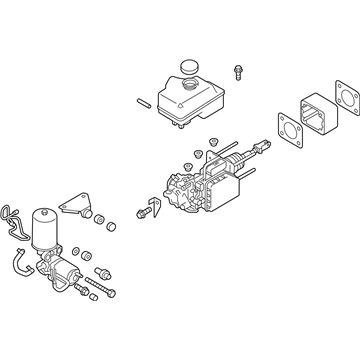×
- Hello
- Login or Register
- Quick Links
- Live Chat
- Track Order
- Parts Availability
- RMA
- Help Center
- Contact Us
- Shop for
- Nissan Parts
- Nissan Accessories

My Garage
My Account
Cart
Genuine Nissan Armada Brake Master Cylinder
- Select Vehicle by Model
- Select Vehicle by VIN
Select Vehicle by Model
orMake
Model
Year
Select Vehicle by VIN
For the most accurate results, select vehicle by your VIN (Vehicle Identification Number).
26 Brake Master Cylinders found

Nissan Armada Cylinder Brake Master
Part Number: 46010-7S20A$317.85 MSRP: $452.78You Save: $134.93 (30%)Ships in 1-2 Business Days
Nissan Armada Cylinder Assy-Brake Master
Part Number: 46010-7S200$317.85 MSRP: $452.78You Save: $134.93 (30%)Ships in 1-2 Business DaysNissan Armada Control Assembly-Brake
Part Number: 46007-5ZA9C$4491.86 MSRP: $5438.09You Save: $946.23 (18%)Ships in 1-3 Business DaysNissan Armada Cylinder Assy-Brake Master
Part Number: 46010-6JL1B$1648.26 MSRP: $2173.00You Save: $524.74 (25%)Ships in 1-3 Business DaysNissan Armada Cylinder Assy-Brake Master
Part Number: 46010-6JL0B$1923.54 MSRP: $2535.91You Save: $612.37 (25%)Ships in 1-3 Business DaysNissan Armada Cylinder Assy-Brake Master
Part Number: 46010-5ZA3C$1652.63 MSRP: $2178.74You Save: $526.11 (25%)Ships in 1-3 Business DaysNissan Armada Cylinder Brake Master
Part Number: 46010-5ZA9C$1652.63 MSRP: $2178.74You Save: $526.11 (25%)Ships in 1-3 Business DaysNissan Armada Cylinder Brake Master
Part Number: 46010-5ZA9B$2200.36 MSRP: $2900.86You Save: $700.50 (25%)Ships in 1-3 Business DaysNissan Armada CYLINDER ASSY-BRAKE MASTER
Part Number: 46010-6JL2B$1648.26 MSRP: $2173.00You Save: $524.74 (25%)Ships in 1-2 Business DaysNissan Armada Cylinder Assy-Brake Master
Part Number: 46010-5ZA0B$1715.91 MSRP: $2262.17You Save: $546.26 (25%)Ships in 1-3 Business DaysNissan Armada Cylinder Assy-Brake Master
Part Number: 46010-5ZA2B$1924.34 MSRP: $2536.96You Save: $612.62 (25%)Ships in 1-3 Business DaysNissan Armada Cylinder Assy-Brake Master
Part Number: 46010-5ZA3B$1652.63 MSRP: $2178.74You Save: $526.11 (25%)Ships in 1-3 Business DaysNissan Armada Cylinder Assy-Brake Master
Part Number: 46010-5ZA1B$2241.55 MSRP: $2955.16You Save: $713.61 (25%)Ships in 1-3 Business DaysNissan Armada Cylinder Assy-Brake Master
Part Number: 46010-5ZA1C$2241.55 MSRP: $2955.16You Save: $713.61 (25%)Ships in 1-3 Business DaysNissan Armada Cylinder Brake Master
Part Number: 46010-5ZA7C$2241.55 MSRP: $2955.16You Save: $713.61 (25%)Ships in 1-3 Business DaysNissan Armada Cylinder Brake Master
Part Number: 46010-5ZA7B$2155.93 MSRP: $2842.29You Save: $686.36 (25%)Ships in 1-3 Business DaysNissan Armada Controller Assy-Brake
Part Number: 46007-5ZA1B$3194.12 MSRP: $3866.97You Save: $672.85 (18%)Ships in 1-3 Business DaysNissan Armada Control Assembly-Brake
Part Number: 46007-5ZA7B$3185.41 MSRP: $3856.43You Save: $671.02 (18%)Ships in 1-3 Business DaysNissan Armada Control Assembly-Brake
Part Number: 46007-5ZA7C$3194.12 MSRP: $3866.97You Save: $672.85 (18%)Ships in 1-3 Business DaysNissan Armada Control Assembly-Brake
Part Number: 46007-5ZA9B$3162.71 MSRP: $3828.94You Save: $666.23 (18%)Ships in 1-3 Business Days
| Page 1 of 2 |Next >
1-20 of 26 Results
Nissan Armada Brake Master Cylinder
If you need any OEM Nissan Armada Brake Master Cylinder, feel free to choose them out of our huge selection of genuine Nissan Armada Brake Master Cylinder. All our parts are offered at unbeatable prices and are supported by the manufacturer's warranty. In addition, we offer quick shipping to have your parts delivered to your door step in a matter of days.
Nissan Armada Brake Master Cylinder Parts Questions & Experts Answers
- Q: How to replace a master cylinder on Nissan Armada?A:Disconnect the cable from the negative battery terminal. Disconnect the electrical connectors for the brake fluid level warning light and the brake fluid pressure sensor. Remove as much fluid as possible from the reservoir with a suction gun, large syringe or a poultry baster. Place rags under the fittings and prepare caps or plastic bags to cover the ends of the lines once they're disconnected. Loosen the fittings at the ends of the Brake Lines where they enter the Brake Master Cylinder. Pull the brake lines away from the Brake Master Cylinder and plug the ends to prevent contamination. Remove the nuts attaching the Brake Master Cylinder to the power booster. Pull the Brake Master Cylinder off the studs to remove it. If necessary, remove the pin on the left side of the Brake Master Cylinder that retains the reservoir and pull it from the Brake Master Cylinder. Lubricate the reservoir seals with clean brake fluid, then press the reservoir into place on the Brake Master Cylinder body. Install the pin that retains the reservoir. Bench bleed the new Brake Master Cylinder before installing it. Mount the Brake Master Cylinder in a vise, with the jaws of the vise clamping on the mounting flange. Attach a pair of Brake Master Cylinder bleeder tubes to the outlet ports of the Brake Master Cylinder. Fill the reservoir with brake fluid of the recommended type. Slowly push the pistons into the Brake Master Cylinder - air will be expelled from the pressure chambers and into the reservoir. Repeat the procedure until no more air bubbles are present. Remove the bleed tubes, one at a time, and install plugs in the open ports to prevent fluid leakage and air from entering. Install the reservoir cap. Install the Brake Master Cylinder over the studs on the power brake booster and tighten the attaching nuts only finger tight at this time. Thread the brake line fittings into the Brake Master Cylinder. Tighten the mounting nuts to the torque. Tighten the brake line fittings securely. Fill the Brake Master Cylinder reservoir with fluid, then bleed the lines at the Brake Master Cylinder, followed by bleeding the remainder of the brake system. Check the Brake Pedal height and adjust if necessary. Check the operation of the brake system carefully before driving the vehicle. If you do not have a firm brake pedal at the end of the bleeding procedure, or have any doubts as to the effectiveness of the brake system, DO NOT drive the vehicle. Have it towed to a dealer service department or other qualified repair shop for diagnosis.
Related Nissan Armada Parts
Browse by Year
2023 Brake Master Cylinder 2022 Brake Master Cylinder 2021 Brake Master Cylinder 2020 Brake Master Cylinder 2019 Brake Master Cylinder 2018 Brake Master Cylinder 2017 Brake Master Cylinder 2015 Brake Master Cylinder 2014 Brake Master Cylinder 2013 Brake Master Cylinder 2012 Brake Master Cylinder 2011 Brake Master Cylinder 2010 Brake Master Cylinder 2009 Brake Master Cylinder 2008 Brake Master Cylinder 2007 Brake Master Cylinder 2006 Brake Master Cylinder 2005 Brake Master Cylinder 2004 Brake Master Cylinder
